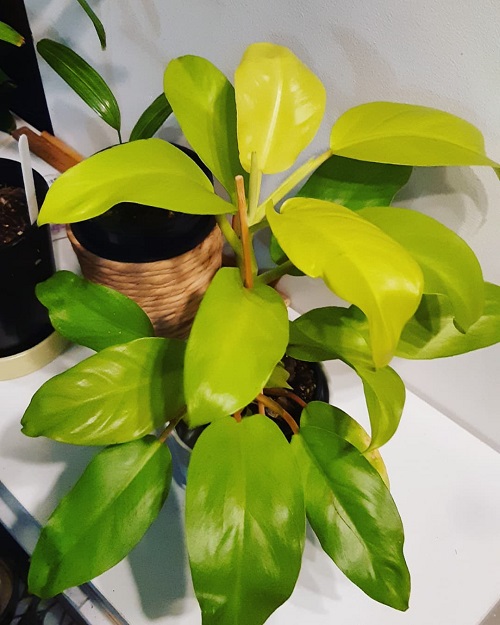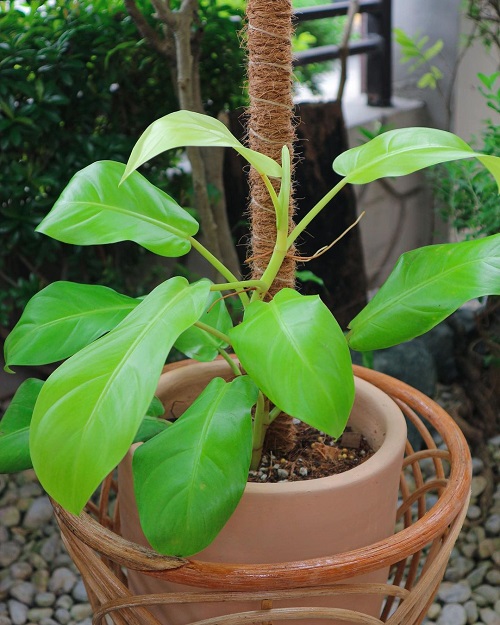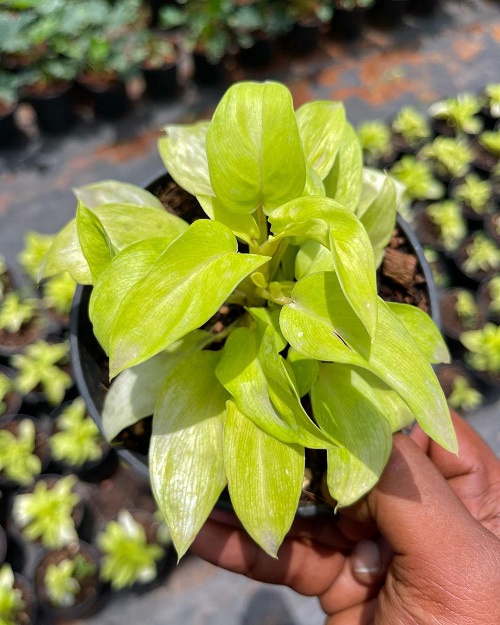Learn How to Grow Philodendron Ceylon if you want to add this ornamental, tropical, evergreen climbing vine to your houseplant collection!

Look at some Stunning Philodendron Varieties here
Philodendron Ceylon Plant Information
Philodendron Ceylon is popular for its brilliant fluorescent green foliage. It can climb up to 3-5 feet in the right growing conditions. The biggest attraction is the paddle-shaped leaves with light shades of bright green or golden cream.
This tropical plant loves to grow around Dracaena, Spathiphyllum, Rhoeo, and Aralia.
Propagating Philodendron Ceylon

You can easily propagate Philodendron Ceylon by stem cuttings or air layering. It is best to do this in spring or summer when the plant is in its growing period. It will form new growth within 2-4 weeks.
Learn about Growing Philodendron Brasil here
Requirements for Growing Philodendron Ceylon

Light
For bright and deep foliage color, keep your Philodendron Ceylon at a spot that gets bright and indirect light all day long. Keep it near an east-facing location where it could bask in some mild and direct morning sunlight.
Avoid keeping it directly in the afternoon sun as it will burn the foliage.
Soil
Water
Philodendron Ceylon is quite fast at catching root rot, so ensure you never overwater the plant. Water when the topsoil feels a little dry to the touch. Do not water the plant daily.
Temperature
The plant grows well in the temperature range of 64-86°F or 18-30°C during the day. Avoid exposing it to temperatures lower than 50F (10C). Also, keep it away from cold windows, vents, or drafts in colder months.
Philodendron Ceylon Care

Fertilizer
Philodendron Ceylon is not a fast grower, so don’t feed it much. To boost the growth, fertilize it once in 4-6 weeks using a balanced liquid fertilizer diluted to 1/4 of its strength. Avoid feeding the plant in winter.
Pests and Diseases
Keep an eye on spider mites and mealybugs. Use an insecticidal soap or neem oil solution to keep them at bay. Avoid overwatering to protect it from bacterial infections, fungal diseases, and root rot.
Toxicity
The leaves may have traces of calcium oxalate crystals, which can cause an upset stomach or mouth irritation if consumed. It would be a good idea to keep it away from pets and children.



Thanks for sharing the blog’s information and it’s importance. The content is very useful and informative.